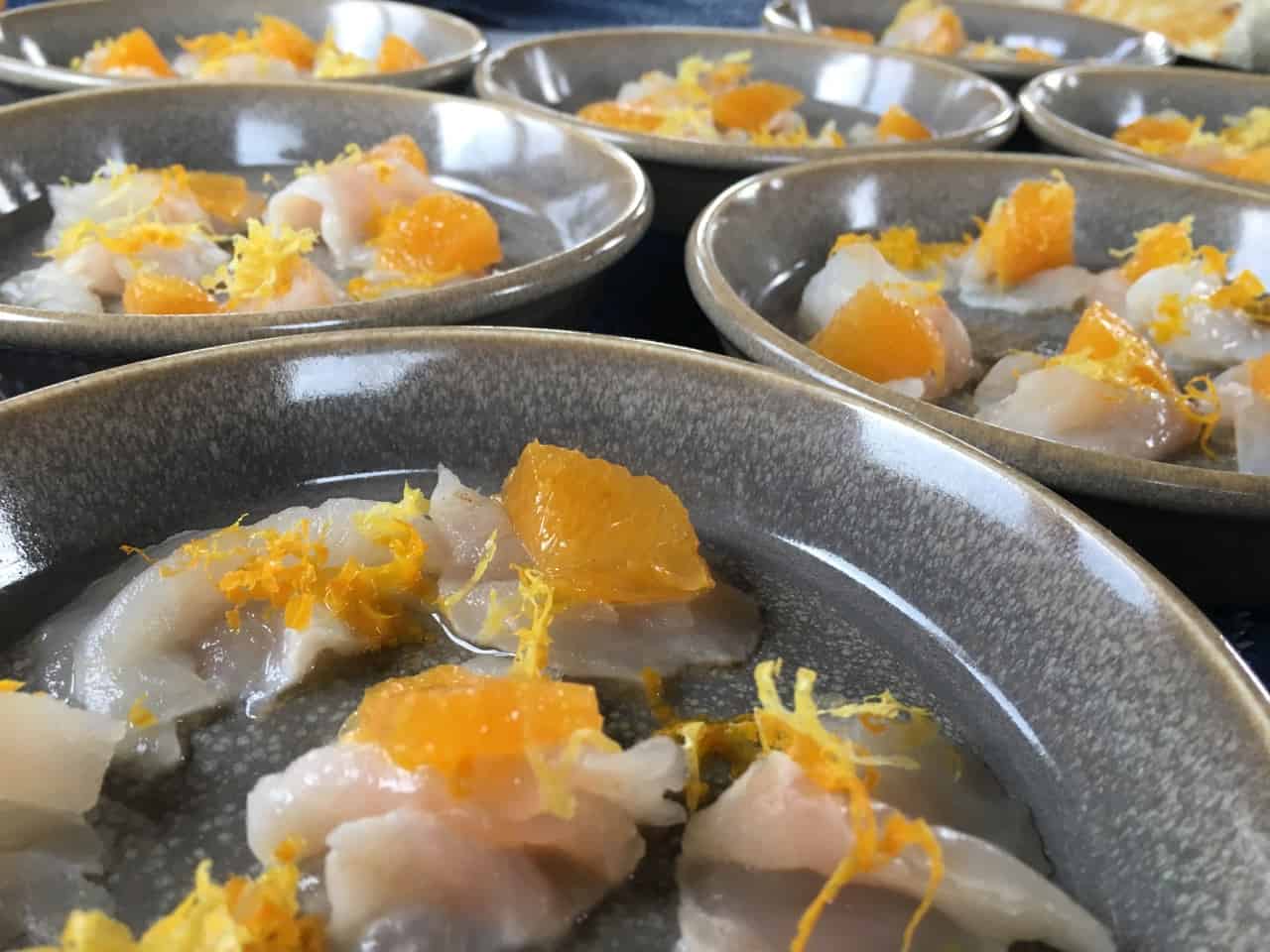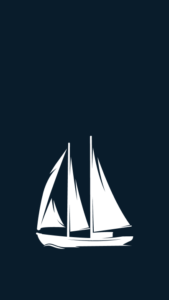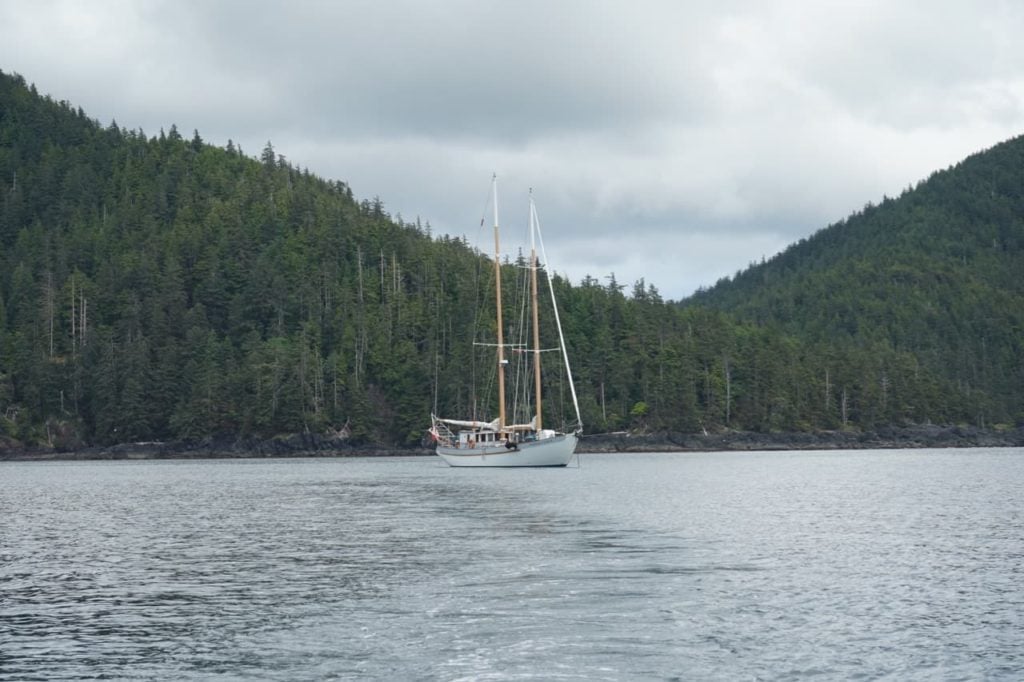
A 9-day expedition log through Haida Gwaii’s Islands of Beauty
Gwaii Haanas July 3-11, 2018
Crew: Captain Russell Markel, Deckhand Oriana Smy, Expedition Chef Erin Vickers, and Onboard Specialist:Graham “Jaahljuu” Richard
Disclaimer: Each day aboard the Passing Cloud is very full: full bellies, smiles, heads/hearts, and memory cards. An indeterminate amount of time and space is required to digest each and every moment, some which may present themselves as memories in later times. Please read with caution. Nostalgia and wanderlust may ensue.

Day 4: July 6
This morning we set off to another beautiful day, with light winds from the south. Another perfect morning for breakfast on the aft deck: Haida Gwaii potatoes, poached farm-fresh eggs, and fennel hash. We get underway and head for Hot Springs Island – yes, that’s the official name, and very fittingly so. We go ashore to a falling tide and meander along the spongy forest trail lined with clamshells, just as the trails of T’aanuu llnagaay (Tanu).
We stop to acknowledge a Sitka spruce tree much younger than the colossal giant we stood beneath just yesterday. This tree, only 30 or 40 years old with its telltale scale-like bark. We talk about the stunted Krummholz trees on the far west coast. Trees that although may be hundreds of years old, left exposed to the open Pacific and battered by the wind and weather, they’ve been relegated to bonsai-like form. They may be small, but they’re certainly mighty with the ability to withstand such west coast winter storms – not unlike the Haida.
Indicative of just how much your environment can shape your growth. I think that’s particularly true in many cases, whether you’re a tree or not.

A 7.4 magnitude earthquake hit the islands in 2012 and temporarily shut off the geothermal vent. The springs are now revitalized after the vent was discovered again and redirected. Watchmen Sheldon and Cliff greet us on arrival and show us to the newest version of the springs. New multi-tiered rock wall tubs were built to support the new flow of the springs. One upper, which is delightfully warm and only slightly cooler than a typical recreational hot tub, and one lower, lukewarm tub.
We sit in the upper mineral pool, overlooking the incredible ocean view, surrounded by ripening salal berries. We’re only a couple of weeks too early to enjoy the sweet purple flesh berries. A robin finds a ripened patch in a higher-up hotspot, unfortunately, far out of reach for us.
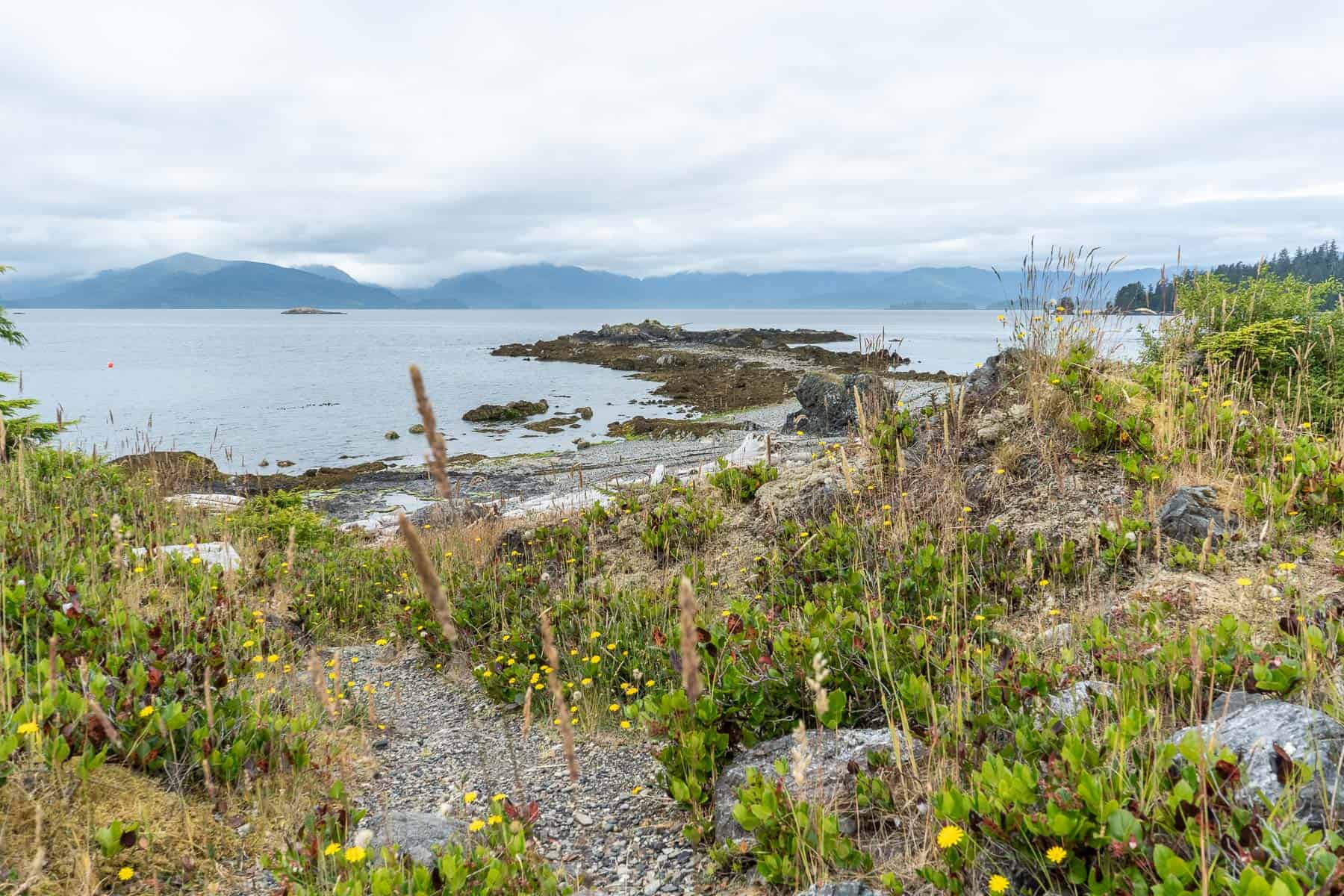
The watchmen have been working on filling a new pool on the cliffside just up the trail, as part of the vent redirection project, now arguably the hottest tub. We watched below as Graham snorkeled and foraged for guuding.ngaay (urchin, or uni in Japanese). To no surprise, there was an over-abundance. He collected a few for the watchmen and kept some for a snack later on.
After a lovely visit, we make our way back through the forest to the beach on the other side of the island. As we wait for our zodiac chauffeur, we poke around the freshly uncovered intertidal to discover many different kinds of seaweed: Sea lettuce (ulva), eelgrass (zostera), purple Lava (porphyra), Turkish towel (condracanthus), and even a few sea stars making a comeback from the devastating sea star wasting disease.

Back aboard our home on the water – the Passing Cloud – Chef Erin has prepared another wonderful meal for us as we get underway. We round Ramsey Island, the epicenter of last year’s deer cull project. The ecological restoration project aimed to eradicate the Sitka black-tail deer, an invasive species. The deer were introduced for hunting purposes as a draw for European settlers to colonize the islands in the late 1800’s. Population estimates today are now upwards of 200,000 animals. However, many believe that’s a conservative guess. Spend any time in Haida Gwaii and you’ll soon discover the over-abundant and unbothered roadside regulars.
Haida Gwaii is known for its iconic mossy forest floors, but it is actually a sign of devastation caused by deer. With so many deer on these small islands, they are destroying the understory and the overall biodiversity of the forest. There are many deer exclosure projects throughout Gwaii Haanas, where it becomes very clear in a short period of time how quickly the forest can be restored without the over-browsing on young sapling trees, particularly cedar (t’suu) a culturally important tree to the Haida.
These restoration projects are efforts to restore ecological balance as part of the Gwaii Haanas Land Sea People conservation plan, cooperatively managed between Parks Canada, Council of the Haida Nation, and Gwaii Haanas Archipelago Management Group.
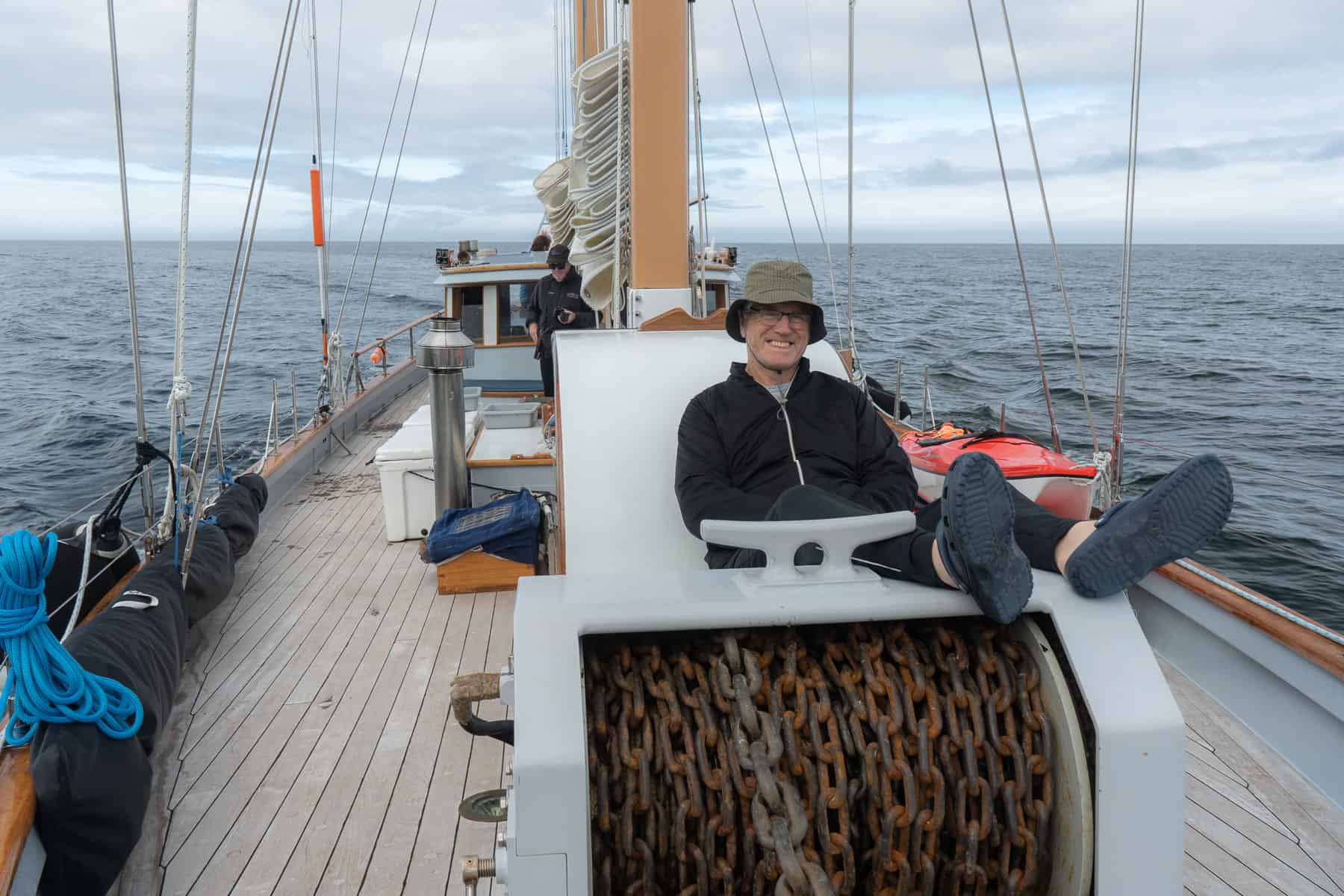
With a morning of relaxing in hot springs and delicious meals to keep us nourished and satiated, we feel as though we’ve had a morning of rejuvenation in the wild spa of Gwaii Haanas. Everyone now finds their space on deck, napping, reading or just simply taking it all in, one breath at a time.
Graham points out some notable landmarks and we discover their Haida name. We transit passed an outcropping of rocks inhabited with sea lions basking in the sun, perhaps having a spa day of their own. Two particularly large males argue over claim to their harem. The typical barnyard smell wafts over us as we happen to (unfortunately) position ourselves downwind. Their bellowing is harmonized by the dozens of animals splayed out across the rocks atop one another.
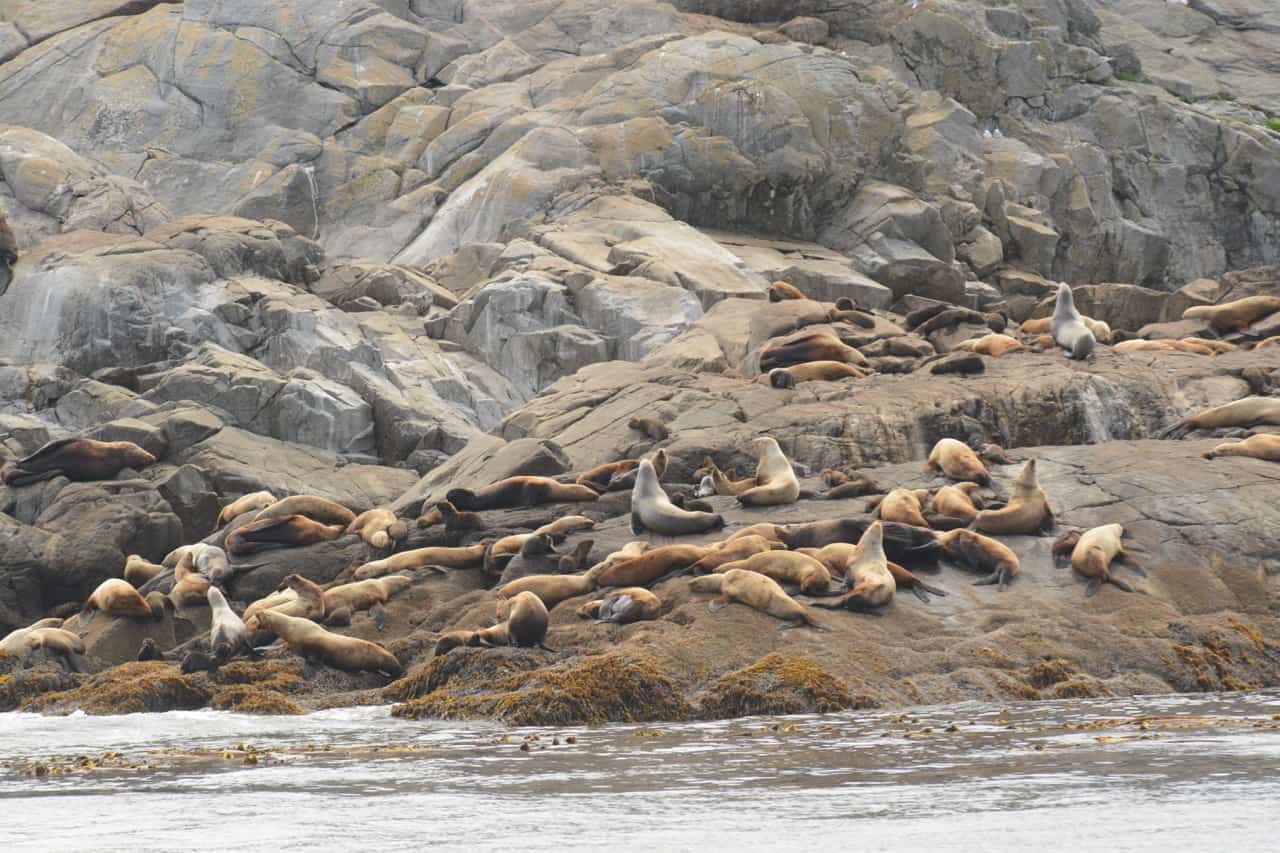
We continue on to our evening destination of Ikeda Cove, named after Japanese fisherman, Archira Ikeda. Ikeda staked claim to this cove in the early 1900’s and began a very successful copper mining operation, complete with tram cars and telephone lines, which ran from the mine site to the inlet for shipping and over to Jedway mine site approximately 6 kilometers away.
As we approach the narrow entrance to the cove, lion’s mane jellyfish emerge from the depths one by one, like very slow underwater fireworks welcoming us to our anchorage for the night.
We sit on the aft deck for a tasty, local treat of guuding.ngaay, harvested earlier by our intrepid sea forager, Graham. Chef Erin has prepared a citrus vinaigrette to go with the raw delicacy. Captain Russ puts on his scientist hat and teaches us about the ecology of the kelp forests, the over-abundance of urchin, and the importance that sea otters play in that environment as a keystone species.

The story of the kelp forest continues as Chef Erin presents the edible version with our appetizer of citrus cured rockfish, thinly sliced, and served with fresh orange segments. Our main course consists of freshly-caught halibut, with foraged sea asparagus (salicornia) and sumac and pea puree. For dessert, we enjoy an amazing chocolate pots du crème.
After dinner, Russ gives a presentation on sea otters to continue the conversation of rockfish conservation and kelp forest highways.
Night 3 onboard and everyone is settling into their spaces and paces of life afloat, with much excitement for what awaits around the corner for tomorrow.
